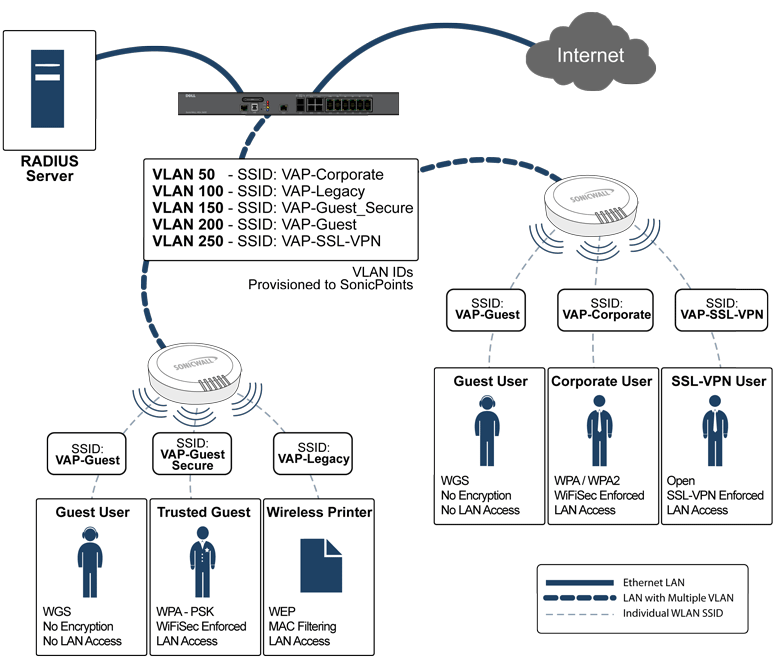
A Virtual Access Point is a multiplexed instantiation of a single physical Access Point (AP) so that it presents itself as multiple discrete Access Points. To wireless LAN clients, each Virtual AP appears to be an independent physical AP, when in actuality there is only a single physical AP. Before the evolution of the Virtual AP feature support, wireless networks were relegated to a One-to-One relationship between physical Access Points and wireless network security characteristics, such as authentication and encryption. In other words, an Access Point providing WPA-PSK security could not simultaneously offer Open or WPA-EAP connectivity to clients, and if the latter were required, they would had to have been provided by a separate, distinctly configured Access Points. This forced WLAN network administrators to find a solution to scale their existing wireless LAN infrastructure to provide differentiated levels of service. With the Virtual APs (VAP) feature, multiple VAPs can exist within a single physical AP in compliance with the IEEE 802.11 standard for the media access control (MAC) protocol layer that includes a unique Basic Service Set Identifier (BSSID) and Service Set Identified (SSID). This allows for segmenting wireless network services within a single radio frequency footprint of a single physical access point device. See Virtual Access Point Configurations.
Virtual Access Point Configurations
For more information on SonicOS Secure Wireless features, refer to the SonicWall Secure Wireless Integrated Solutions Guide available at http://store.elsevier.com/.